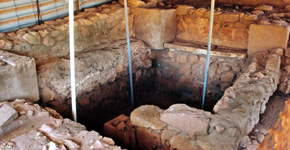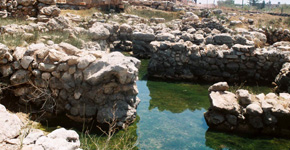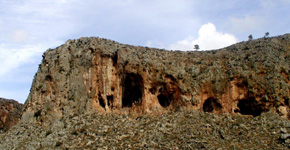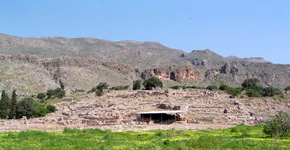The Palace of Zakros is located 26 kms south of Palekastro. Its position shelters it from the dangerously strong north winds that pass Cape Sidero on the north-east tip of Crete.
|
|
|
It was the last of the major palaces to be discovered and is smaller than the other three at Knossos, Malia and Phaistos. The original excavations were begun by D.G. Howarth of the British School of Archaeology in Athens, and 12 houses in the town surrounding the Palace, whose existence remained unknown, were unearthed before the excavation was abandoned. Nikolaos Platon resumed the excavation in 1961 and was able to unearth a palace which had not been looted at the time of its destruction. The excavations have continued until the present day. The excavation represents one of the most important for Minoan archaeology since the Second World War, and the lateness of its discovery allowed it to be excavated using more modern and more scientific methods than those adopted in the excavation of the other Palaces some 60 years earlier.
|
|
|
The Palace of Zakros probably acted as the Minoan gateway to the east and this view is supported by various movable finds on the site which had come from the Middle East. Like the other palaces, Zakros was rebuilt after the earthquake destruction of the old palaces. The second palace was built around 1600 BC and finally destroyed around 1450 BC, along with other centres of Minoan civilisation in Crete. Fortunately many artefacts were left in situ, probably due to the suddenness of the destruction. The palace covered 8,000 square metres, contained 150 rooms and had a Central Court measuring about 30 metres by 12 metres, smaller than that of Knossos.




